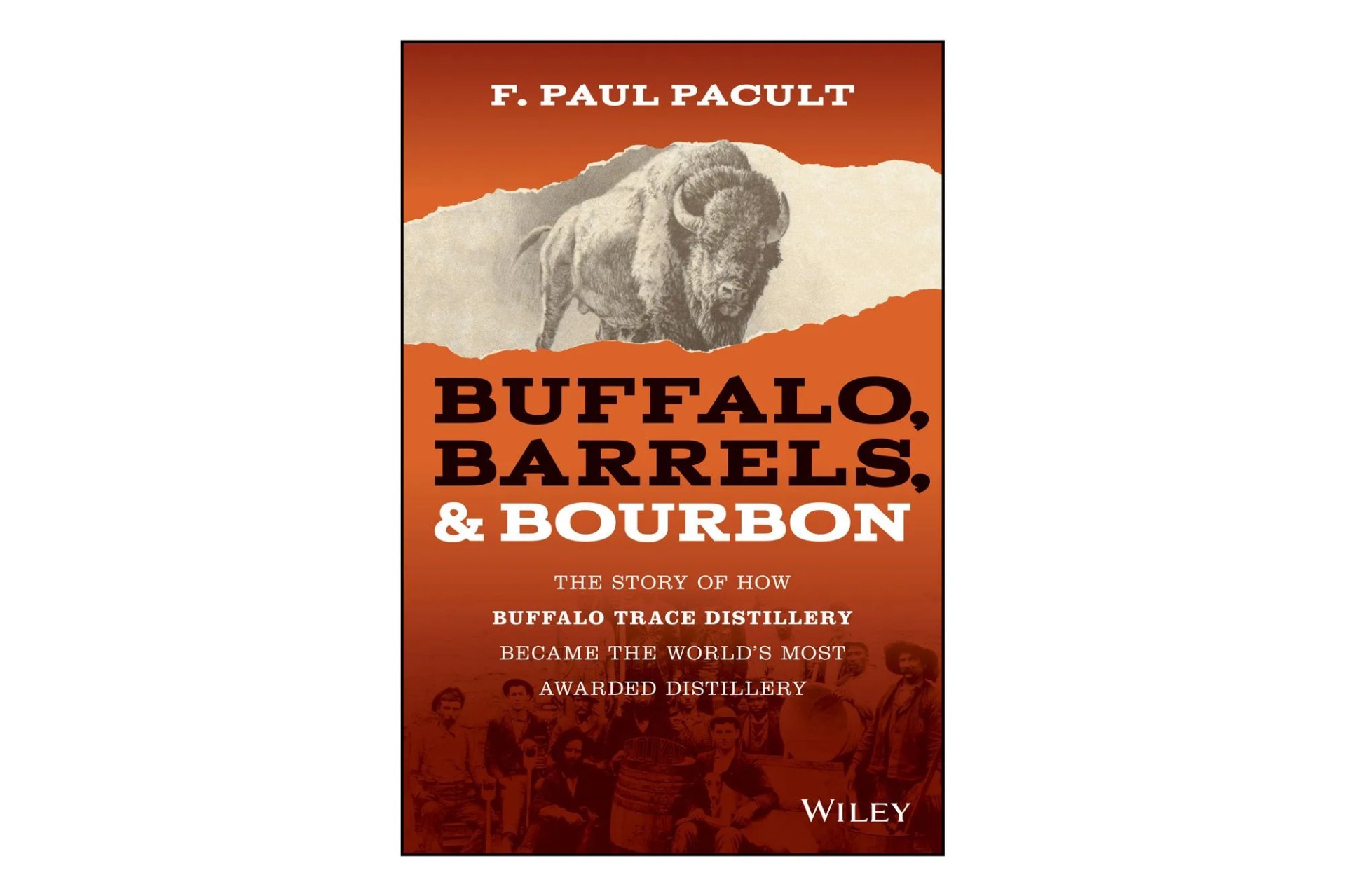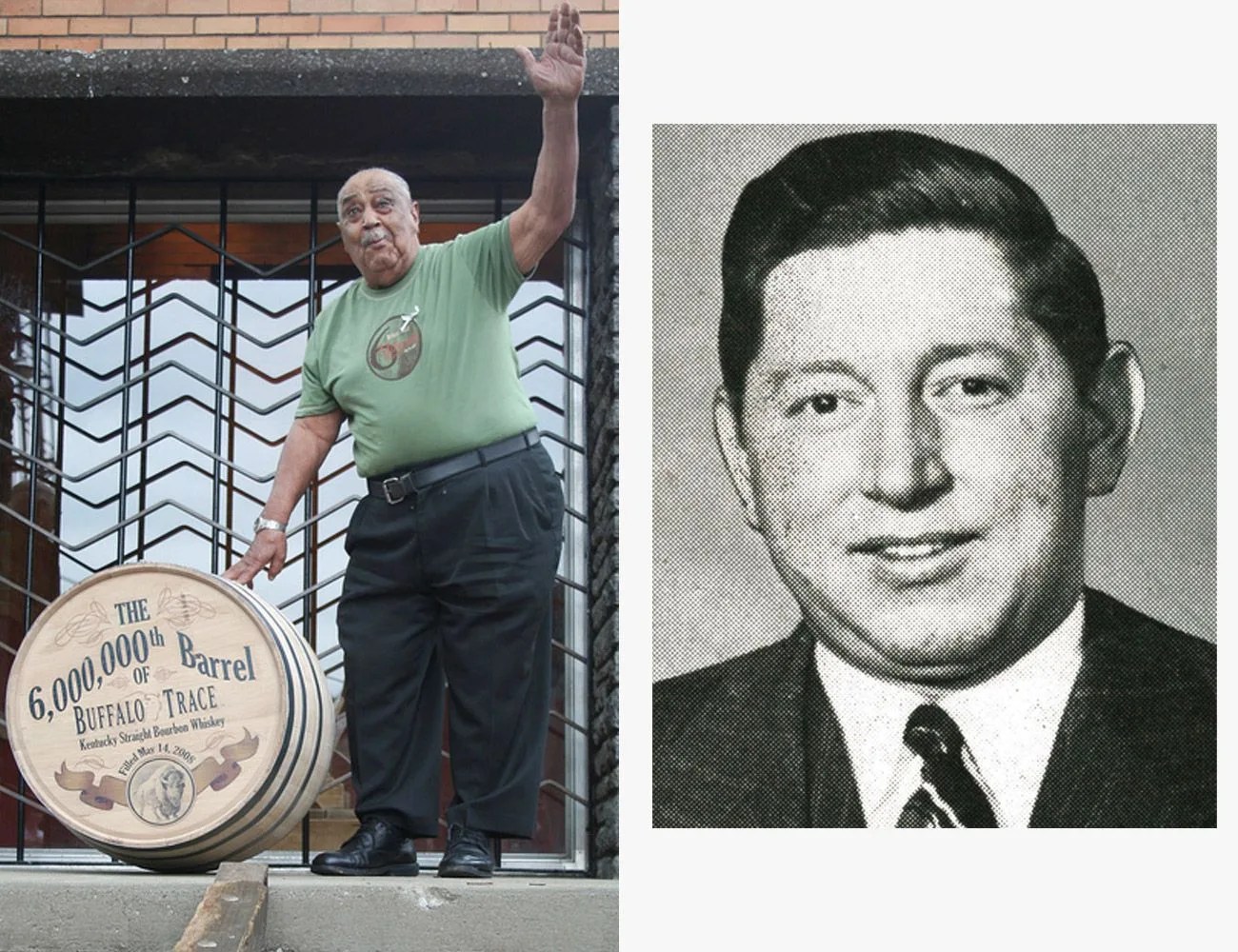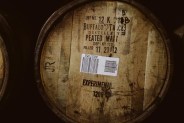The following passage was excerpted from F. Paul Pacult’s new book on the history of Buffalo Trace Distillery, Buffalo, Barrels, & Bourbon, available now wherever books and eBooks are sold. It has been lightly edited from its original version.
Without a doubt, the whiskeys that provide the most radiant “halo” effect for the entire Buffalo Trace Distillery whiskey portfolio is the assemblage of two straight ryes and three straight bourbons that comprise the annual limited edition offering known as the Buffalo Trace Antique Collection (BTAC). The three straight bourbons – George T. Stagg uncut/unfiltered/ barrel strength, Eagle Rare 17-Year-Old, and William Larue Weller uncut/ unfiltered/barrel strength – and the two straight ryes – Thomas H. Handy Sazerac Rye uncut/unfiltered/barrel strength and Sazerac 18-Year-Old Rye – have since 2006 headlined this yearly autumn release. In 2020, the suggested retail price of each whiskey was $99.99. Like the Van Winkles, however, the street prices can reach into the thousands of dollars per bottle due to the scarcity factor.
 Wiley
WileyBuffalo, Barrels, & Bourbon
-
$27.00 (17% off)
Because of the small quantities, each BTAC is eked out seemingly through an eyedropper in painfully minute amounts that are released in allotments to key whiskey retailers across the nation, as once again the annual amount of each whiskey is determined solely by its advanced age. Following the release of the BTAC each fall, the resultant reactions predictably unfold in four stages. First is the initial outrage stage that no one ever gets enough to satisfy them and why doesn’t Buffalo Trace just make more; second is the deep anguish stage that leads to copious amounts of complaining, bickering, weeping, and gnashing of teeth across the nation; third is the chicanery stage in which regional fits of out-and-out bribery and horse-trading to hustle a BTAC or two break out; and fourth is the forbearance stage, meaning the sad embracing of the reality that most consumers will never taste the BTAC. Any Kentucky whiskey distiller toiling in the depressed 1970s or 1980s could never conceive of the time or circumstance in which this type of reaction to a five-bottle collection of bourbon and rye could occur. But in 2021, this is where we are.
The BTAC program was unveiled in 2000, with the inaugural collection totaling only three whiskeys that were priced at $49.99 each, Sazerac 18-Year-Old, Eagle Rare 17-Year-Old, and William Larue Weller 19-Year-Old. The reaction from the media was robust and positive from the very first release. Over the subsequent four years, the roster was juggled like tennis balls in the hands of Zippy the circus clown. The 2005 BTAC, for instance, boasted three individual George T. Stagg bottlings, which from a marketing standpoint made little sense and, in fact, seeded confusion in the marketplace, which was still adjusting to the concept of high-priced super-premium American whiskey. The quintet that we still see and covet today in 2021 was settled on in 2006.
Recollected Mark Brown about how the George T. Stagg element of the Antique Collection came to be, “A barrel-strength whiskey was then suggested by a West Virginia consumer. We did not think, to be honest, it would sell but were prepared to give it a shot. The whiskey was conceived and picked by a group of Buffalo Trace retirees, all in their 80s and 90s, including legends like Jimmy Johnson and Orville Schupp.”

Master distiller Harlen Wheatley talked to me about the BTAC program’s earliest days in our interview, “I remember when we launched the collection . . . it was an evolution in the first years. From the production side, it was the Sazerac 18-Year-Old [rye] that was first. I remember the conversation about Stagg [laughs] and someone from marketing questioning, ‘But who’s going to be willing to buy an uncut, unfiltered whiskey?’ To me, the collection is the halo of all that we do with making whiskey. They are the best offerings of our various recipes . . . each recipe for each edition checks all the boxes for what you want in either a great rye or bourbon . . . the variety is the key element that makes it [BTAC] special.”
Echoed Mark Brown in an email to me last October, “The consistent critical acclaim that our Antique Collection whiskeys have won on the global stage over the past 20 years has helped to elevate the status of American whiskey and Buffalo Trace Distillery. Which we believe is both justified and helpful to the development of the entire category. Making a fine bottle of bourbon or rye is every bit as complicated and stressful as making the world’s finest French Bordeaux . . .”
But, will the small quantities of the BTAC forever be a fact of life? What about introducing new bourbons or ryes? Replied Brown, “We have been laying away more Antique Collection barrels so we are pleased that we will be able to bring more to consumers in coming years. We do not have any current plans to add new expressions.”
In 2021, when the predictable controversies abound as to which American whiskey is the best of the best, it can come as no surprise that a Van Winkle or Antique Collection expression is frequently cited. This sort of exercise is, in my own view as a been-around-the-block spirits critic and writer, a pointless expenditure of gray matter energy. You will receive no argument from me concerning the quality of the Van Winkle, The Last Drop, or Antique Collection whiskeys. As advertised, they are each of unimpeachable pedigree, masterfully crafted and aged, and often are stupendously charming whiskeys. But, to lay claim that this rye or that bourbon is the finest American whiskey of all when in recent years there have existed so many wonderful bourbons, ryes, bottled in bonds, single barrels, small batches, single malts, and more domestic whiskeys produced both by mainstream and craft distillers is absurd, parochial, and myopic. Face it: such an exercise is always floated on the vast and undulating ocean of subjectivity.
So, here’s a personal hint from me to thee: the best American whiskey is not necessarily the one that the critics and the bloggers rave about. It’s actually the one that happens to be the whiskey that you prefer the most.
Excerpted with permission from the publisher, Wiley, from Buffalo, Barrels, & Bourbon by F. Paul Pacult. Copyright ©2021 by Spirit Journal, Inc. All rights reserved. This book is available wherever books and eBooks are sold.

